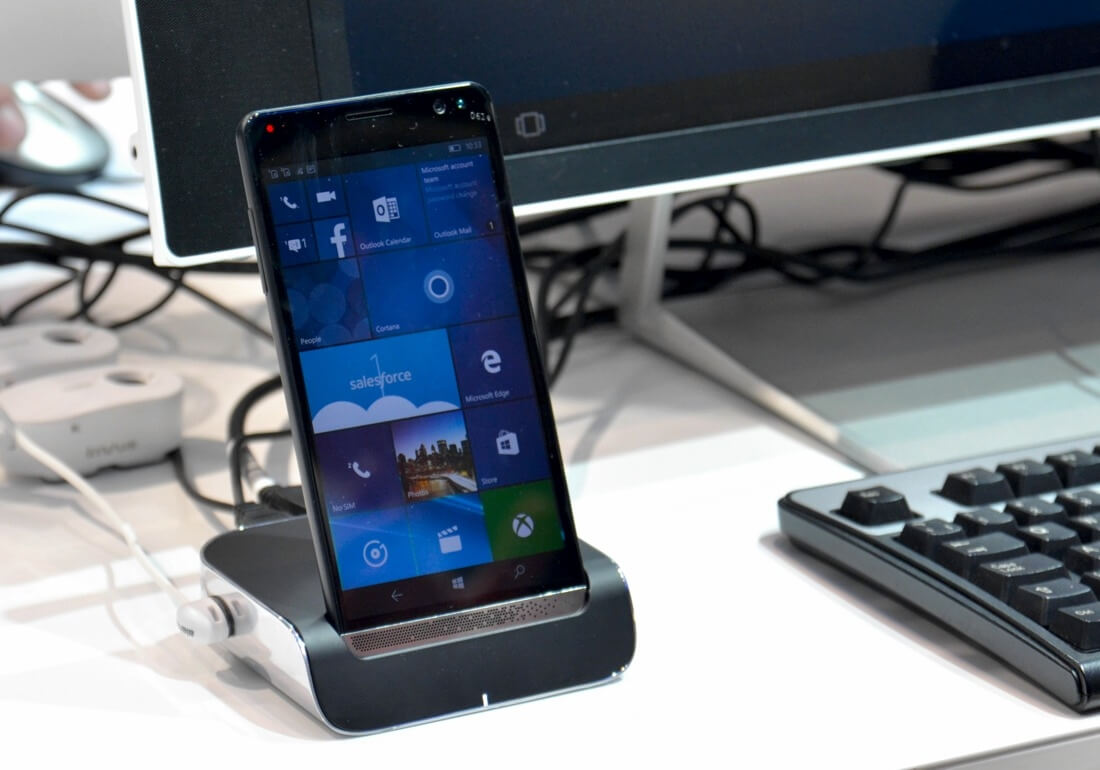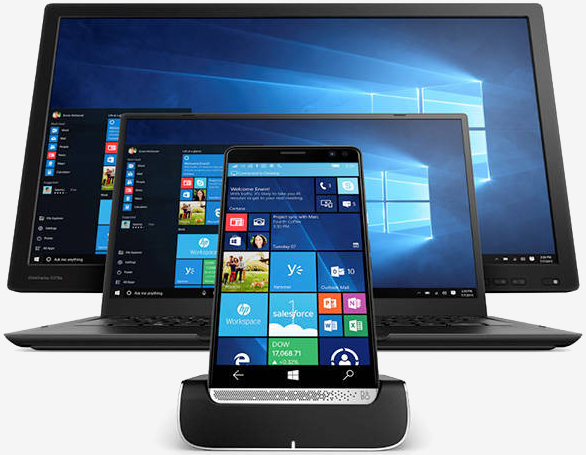
Microsoft and HP at Mobile World Congress this past February announced the HP Elite x3, a large-screen smartphone that many label as the first truly compelling Windows 10 Mobile device. After months of waiting, the handset is now available for purchase both online and at Microsoft’s more than 100 retail locations.
The phablet consists of a 5.96-inch, edge-to-edge WQHD (2,560 x 1,440) AMOLED display with Gorilla Glass 4 that’s powered by Qualcomm’s Snapdragon 820 SoC, Adreno 530 graphics and 4GB of LPDDR4 RAM. The 64GB of local storage is expandable via microSD card slot up to 2TB (it shares the same slot as the secondary SIM).

Other noteworthy specs include a 16-megapixel rear camera, an 8-megapixel front-facing camera with Iris recognition, a fingerprint reader (both the camera and fingerprint reader work with Windows Hello), 802.11 a/b/g/n/ac (2x2) Wi-Fi with Bluetooth 4.0 LE that supports Miracast, NFC, a USB 3.0 Type-C connector and stereo speakers.
It also carries an IP67 rating for protection against dirt and liquids. A sizable 4,150mAh battery is said to be good for up to 33 hours of talk time, 14 hours of web browsing or 13 hours of video playback.

What really sets the HP Elite x3 apart is the fact that it’s essentially three devices in one, using Microsoft’s Continuum and HP’s two docking accessories.
Using the included Desk Dock, you can essentially transform the Elite x3 into a full-fledged desktop computer. The dock features a DisplayPort, an Ethernet jack, a power port, two USB Type-A ports (for a wired mouse, keyboard, storage drive, etc.) and a USB Type-C port as well as a Kensington lock slot.
The optional HP Elite Lap Dock, meanwhile, is essentially a shell of a laptop with a keyboard, screen and so on (similar to the Kangaroo Notebook bundle) that lets you use the Elite x3 as a laptop. The handset pairs with the laptop shell wirelessly, thus eliminating the need to haul around extra cables while on the go.
We’ve seen multi-purpose smartphones in the past such as the Motorola Atrix and the Asus PadFone but nothing has struck a chord with consumers thus far. It would seem that Microsoft and HP’s play would have the best chance for success because, as Bob O’Donnell points out, the Elite x3 is positioned and designed primarily as a computer with smartphone capabilities built in versus the other way around.
Whether or not the HP Elite x3 is successful or not is largely irrelevant as Microsoft has all but thrown in the towel with regard to Windows 10 Mobile. That’d be a real shame should the device actually prove popular with buyers. I suppose Microsoft could change its mind but that’s asking a lot of a single smartphone.
The HP Elite x3 bundle that includes the Desk Dock is available as of writing priced at $799. The optional HP Elite x3 Lap Dock will set you back an additional $599, nearly as much as the phone and the Desk Dock.
https://www.techspot.com/news/66618-hp-3-1-windows-10-mobile-smartphone-elite.html